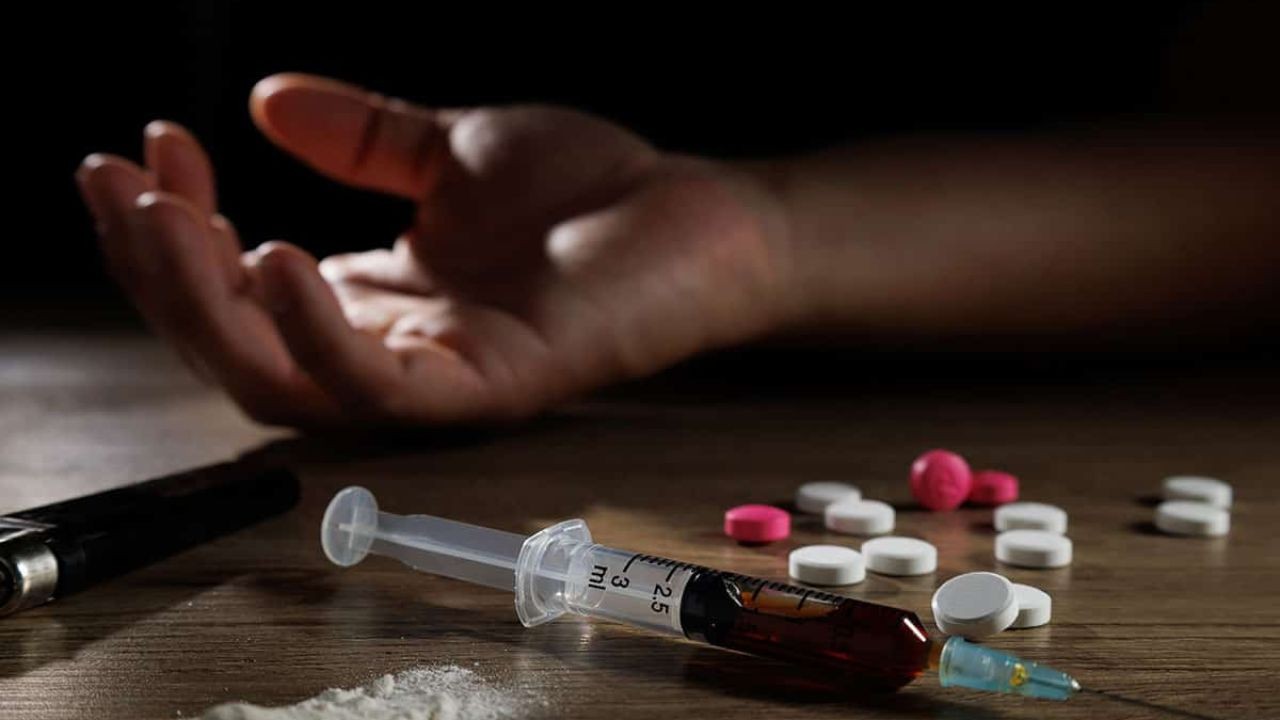Introduction
Drug-related issues are often associated with countries grappling with massive population densities or international drug trafficking networks. However, the situation in New Zealand tells a surprisingly different story. While known for its serene landscapes and relatively lower crime rates, New Zealand’s major cities are facing an escalating drug crisis that could potentially impact its economic stability, public health, and social fabric. Recent data from the Stats NZ indicates a worrying trend: drug-related offenses have increased by nearly 10% over the past five years. This article delves into five surprising facts about the drug crisis, exploring how it intertwines with New Zealand’s economic and social structure, and what it means for investors and policymakers.
1. The Silent Economic Cost of Drug Addiction
While drug addiction is primarily viewed as a health crisis, its economic repercussions are profound. The Reserve Bank of New Zealand highlights that the productivity loss due to drug-related issues costs the nation approximately NZD 1.8 billion annually. For investment bankers, understanding this hidden cost is crucial as it affects labor productivity and, consequently, the overall economic growth. The drug crisis indirectly influences industries ranging from healthcare to retail, where employee absenteeism and workforce turnover become significant concerns.
Pros:
- Increased awareness can lead to more strategic investment in rehabilitation and healthcare sectors, potentially yielding high ROI.
- Government initiatives to combat drug issues can open up funding opportunities and public-private partnerships.
Cons:
- The rising economic cost may deter foreign investments if perceived as a long-term risk.
- Potential regulatory changes aimed at combating drug issues could increase business operational costs.
Case Study: The Impact on Auckland’s Hospitality Industry
Problem:
Auckland, New Zealand's largest city, has seen a significant rise in drug-related incidents affecting its hospitality sector. This uptick has resulted in higher employee turnover and increased security costs for businesses.
Action:
Several hospitality businesses partnered with local NGOs to implement employee assistance programs (EAPs) focusing on drug prevention and rehabilitation.
Result:
- Employee retention: Increased by 35% within a year.
- Operational costs: Reduced security expenses by 25% due to decreased incidents.
- Community engagement: Enhanced brand reputation through social responsibility initiatives.
Takeaway: This case underscores the importance of addressing drug-related issues proactively, not only as a social responsibility but also as a strategic business decision that can improve operational efficiency and brand equity.
2. The Role of Methamphetamine in New Zealand’s Drug Crisis
Methamphetamine, or ‘P’, remains a significant driver of the drug crisis in New Zealand. A report from the New Zealand Police indicates that methamphetamine cases make up 60% of all drug-related offenses in major cities. This prevalence has prompted a multi-agency approach involving law enforcement, healthcare providers, and community organizations.
Pros:
- Increased governmental focus on methamphetamine can lead to more targeted funding and research opportunities for investors.
- Improved law enforcement strategies can enhance community safety, indirectly benefiting local businesses.
Cons:
- Persistent methamphetamine issues can tarnish New Zealand's global image, affecting tourism and international business relations.
- Businesses may face increased compliance costs as regulations tighten to combat methamphetamine distribution.
Common Myths & Mistakes
Myth: “Drug issues are mainly a problem in urban areas.”
Reality: While urban centers like Auckland and Wellington are epicenters, rural areas are also significantly affected by methamphetamine use, highlighting a nationwide issue.
Myth: “Legalization of certain drugs will solve all problems.”
Reality: Legalization can lead to new challenges, such as increased accessibility and potential misuse, necessitating comprehensive regulation and education.
3. How Drug Trafficking Influences New Zealand’s Financial Systems
Drug trafficking operations often employ sophisticated methods to launder money, which can subtly infiltrate financial systems. New Zealand’s banking sector must remain vigilant, as the Reserve Bank has emphasized the importance of robust anti-money laundering (AML) measures. For investment bankers, understanding these risks is crucial as they can affect financial stability and investment flows.
Pros:
- Stricter AML regulations can enhance the overall security and reputation of New Zealand’s financial system.
- Opportunities for fintech solutions that offer advanced AML compliance tools.
Cons:
- Increased compliance costs for financial institutions can affect profitability.
- Potential reputational damage if a financial institution is linked to drug money laundering activities.
4. The Ripple Effect on Public Health Systems
The drug crisis has a profound impact on New Zealand’s public health systems, straining resources and leading to increased healthcare costs. A study from the University of Auckland found that drug-related hospital admissions have increased by 15% over the past decade. This trend poses both challenges and opportunities for healthcare investments and policy reforms.
Pros:
- Increased demand for healthcare services can lead to growth opportunities in the pharmaceutical and healthcare sectors.
- Government investment in public health can lead to new policy frameworks that prioritize preventative care and rehabilitation.
Cons:
- Strain on public health resources can divert funds from other critical areas, impacting overall healthcare quality.
- Healthcare providers may face challenges in managing increased patient loads and complex drug-related health issues.
5. Community and Social Implications of the Drug Crisis
The social fabric of New Zealand is under pressure as communities grapple with the effects of drug addiction. This crisis has led to increased crime rates, family disruptions, and social stigma. Community engagement and proactive policies are essential to address these challenges.
Pros:
- Community-driven initiatives can foster resilience and social cohesion, creating a more supportive environment for recovery.
- Successful community programs can serve as models for nationwide implementation, attracting government and private funding.
Cons:
- Social stigma surrounding drug addiction can hinder recovery efforts and reduce community participation.
- Increased crime rates associated with drug issues can affect community safety and property values.
Future Trends & Predictions
As New Zealand continues to address its drug crisis, several trends and predictions emerge:
- By 2028, it is anticipated that New Zealand will implement more comprehensive drug policies focusing on harm reduction rather than punitive measures, aligning with global best practices (Source: Deloitte Healthcare Report 2024).
- Technological advancements in financial monitoring will lead to more effective AML systems, reducing the risk of drug money laundering (Source: McKinsey Financial Services 2025).
- Community-led initiatives will become a cornerstone of New Zealand’s drug policy, emphasizing rehabilitation and support over incarceration (Source: NZ Ministry of Health).
Final Takeaways
- Economic Impact: The drug crisis poses a significant economic challenge, affecting productivity and public spending.
- Methamphetamine Challenge: Addressing methamphetamine use is critical for reducing drug-related offenses.
- Financial Vigilance: Robust AML measures are essential to safeguard New Zealand’s financial systems.
- Healthcare Strain: Increased demand for drug-related healthcare services offers growth opportunities and challenges.
- Community Engagement: Building resilient communities is key to addressing the social implications of drug addiction.
For investment bankers and policymakers, understanding these dynamics is essential to navigating the complexities of New Zealand’s socio-economic landscape effectively.
What’s Your Take? How do you see the drug crisis impacting New Zealand’s future economic and social landscape? Share your insights and join the discussion below!
People Also Ask (FAQ)
- How does the drug crisis impact New Zealand’s economy? The drug crisis leads to productivity loss, estimated at NZD 1.8 billion annually, affecting economic growth and stability.
- What are the biggest misconceptions about the drug crisis in New Zealand? One myth is that drug issues are confined to urban areas, while rural regions are also significantly affected.
- What strategies are effective in combating New Zealand’s drug crisis? Effective strategies include community engagement, harm reduction policies, and robust anti-money laundering measures.
- How does methamphetamine use affect New Zealand’s public health? Methamphetamine use has increased hospital admissions, straining public health resources and increasing healthcare costs.
- What upcoming changes could affect New Zealand’s drug policy? By 2028, comprehensive harm reduction policies focusing on rehabilitation are expected to be implemented.
Related Search Queries
- New Zealand drug crisis statistics
- Methamphetamine use in Auckland
- Impact of drug addiction on NZ economy
- Anti-money laundering measures New Zealand
- Public health policies New Zealand drug crisis
- Community programs for drug rehabilitation in NZ
- Future of drug policies in New Zealand
- Economic effects of drug addiction NZ
- Methamphetamine impact on NZ healthcare
- Drug-related crime rates in New Zealand

























